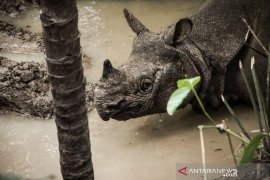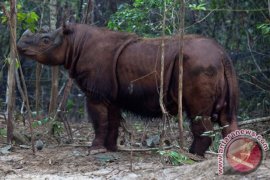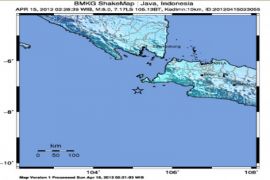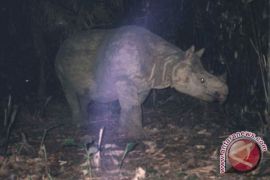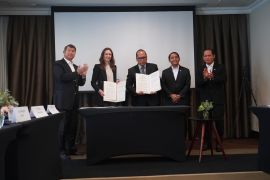"Translocation to the JRSCA could help prevent inbreeding and strengthen the genetic resilience of the population,”Jakarta (ANTARA) - The Indonesian Ministry of Forestry is planning to translocate several Javan rhinos (Rhinoceros sondaicus) to the Javan Rhino Study and Conservation Area (JRSCA) as part of a breeding program.
In a statement received in Jakarta on Thursday, the ministry’s Director General of Natural Resources and Ecosystem Conservation, Satyawan Pudyatmoko, explained that the program aims to genetically diversify the rhino population.
“There are indications of a decline in genetic variety among Javan rhinos in the wild. Therefore, translocation to the JRSCA could help prevent inbreeding and strengthen the genetic resilience of the population,” he remarked.
He affirmed that the Forestry Ministry would implement the conservation plan in partnership with the Indonesian Navy (TNI-AL), the Indonesian Rhinoceros Foundation (YABI), and other partners.
Elaborating further on the plan, Pudyatmoko said that several rhinos would be moved about 14 kilometers from the Ujung Kulon Peninsula —both located within the Ujung Kulon National Park in Banten Province— using tactical TNI-AL vehicles via sea routes.
In preparation, the TNI-AL Marine Corps conducted a simulation on May 28 in Jakarta to test the use of Kapa K-61 amphibious battle vehicles for transporting the Javan rhinos.
“This simulation is crucial to ensure the translocation process runs safely with minimal risks, considering the long distance,” he remarked.
He highlighted the Marine Corps’ involvement in this endangered species conservation project as a strategic example of cross-sector collaboration.
Meanwhile, Commander of the Marine Corps’ Artillery Transport Amphibious Vehicle Battalion (Yonkapa) 1, Major Bayhaky C. Chipta, emphasized that the mission reflects TNI-AL’s preparedness for rescuing wild animals during natural disasters.
He explained that the Kapa K-61 amphibious vehicles were tested with a focus on safety, stability, and efficiency.
The simulation involved a specially designed cage weighing about one ton, equipped with ventilation and shock-absorption buffers to ensure sufficient oxygen supply and minimize jolts.
Chipta affirmed that the simulation showed the amphibious vehicles meet the standards required to safely translocate Javan rhinos, supporting efforts to improve the species' survival prospects.
Related news: Government confirms new Javan rhino calf spotted at Ujung Kulon park
Related news: Javan rhino, the unicorn from Ujung Kulon
Translator: Prisca T, Tegar Nurfitra
Editor: Arie Novarina
Copyright © ANTARA 2025

